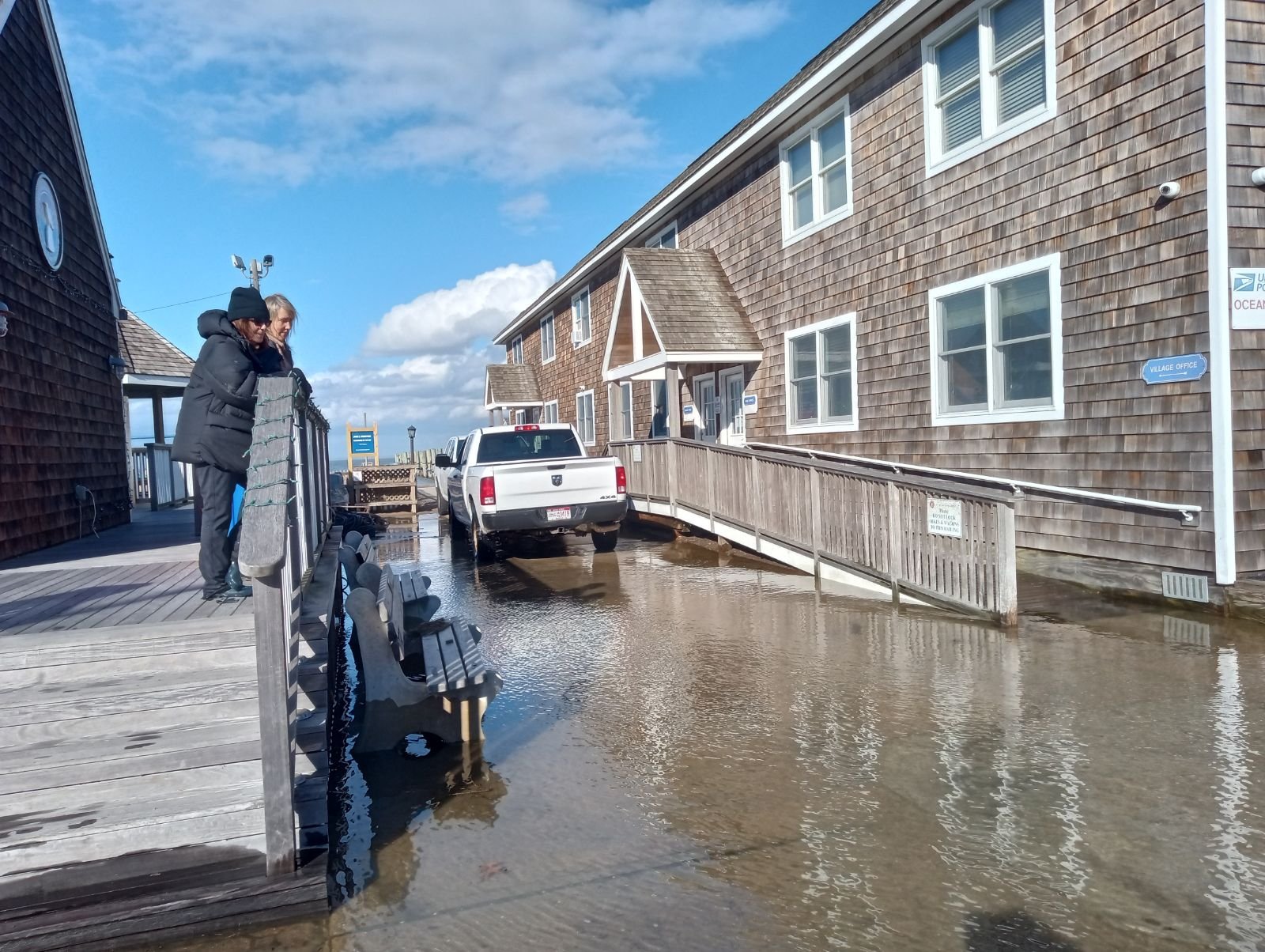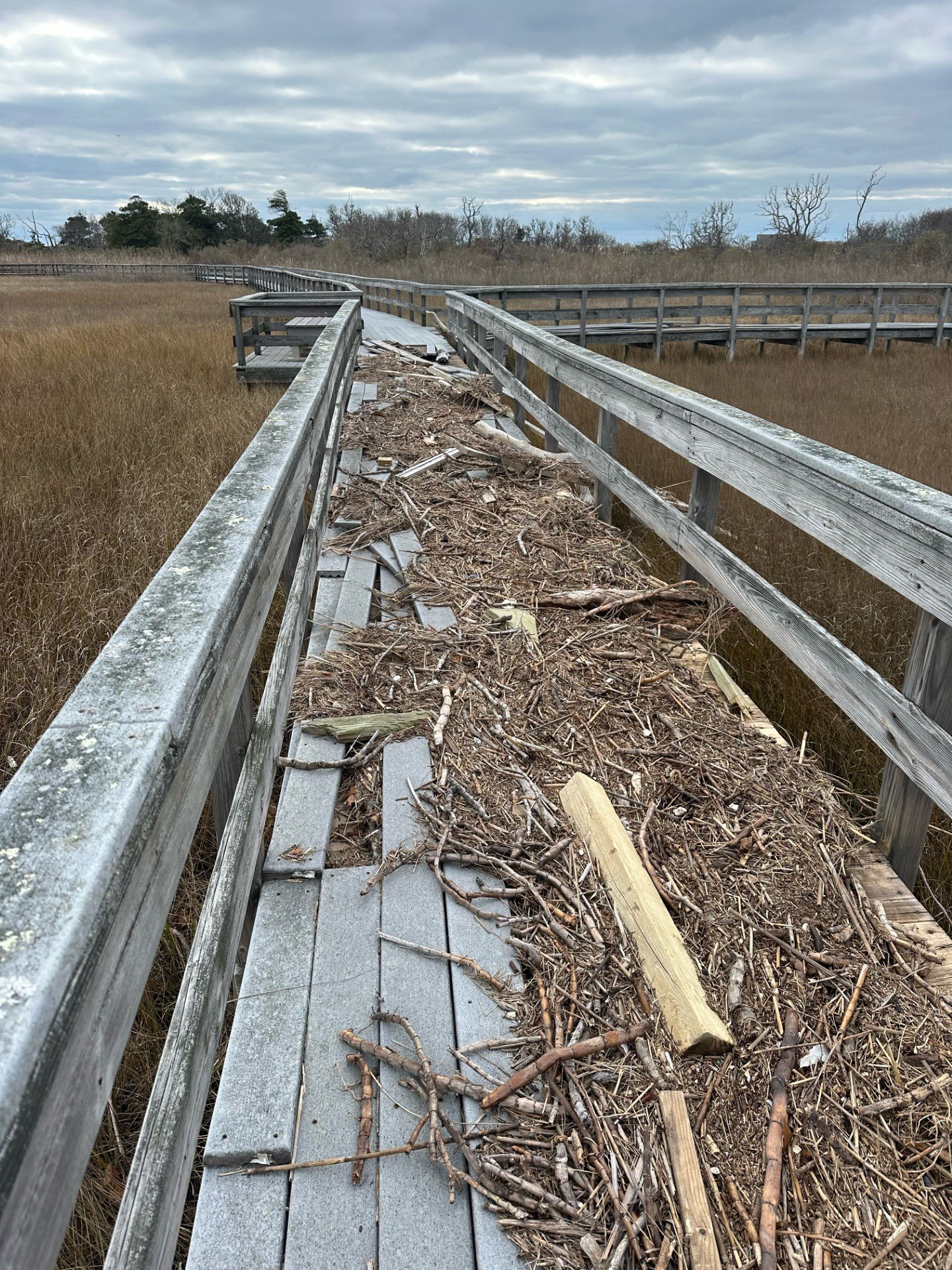
Ocean Beach Village Hall, Saturday, January 13. Photo by Shoshanna McCollum.
The word “breach” has been used frequently by news reporters and public officials alike since last week’s January 10 storm, especially after Suffolk County Executive Ed Romaine toured Ocean Beach with a media entourage in tow the following morning.
A breach is defined as the breakdown of a beach barrier, allowing the influx of tidal action. With overwash, that influx of ocean water overtops the dunes, but is a more short-lived event. The two certainly have similarities, but they are not the same thing. To use the terms interchangeably is incorrect and causes confusion, which can lead to a ripple effect of misinformation.
A breach broke through Fire Island National Seashore Wilderness Area during Hurricane Sandy in 2012, becoming an inlet that remained open for a decade. However dynamic activity in the same vicinity during last month’s December 18, 2023 nor’easter lasted less than a day.

Damaged boardwalk trails at Watch Hill, photo by Ted Steffensen.
Were breaches formed on Fire Island during Wednesday’s storm? New York State Department of Environmental Conservation (NYSDEC) doesn’t think so. A representative from their District Region 1 office in Stony Brook confirmed that NYSDEC crews were dispatched to tour the areas between Robert Moses and Fire Island Pines and saw no evidence of breaching.
Further east, a statement released by Fire Island National Seashore on January 11 confirmed nature trail closures at Watch Hill, Sunken Forest and the Carrington tract until further notice due to significant boardwalk damage, but breach formations were not mentioned.
Finally, use of the word breach to describe recent storm damage was publicly retracted over the weekend at an Ocean Beach Village Board of Trustees meeting held on Saturday, January 13.
This is not to say our situation on Fire Island right now is anything less than serious. Overwash signals vulnerable areas along a barrier beach where a breach could happen if a storm event is significant enough. It is something we must always keep our eye on.
However, during a time when much hangs in the balance, it is all the more critical that terminology be used correctly, so that appeals for relief remain credible and the public at large stay well informed.


























